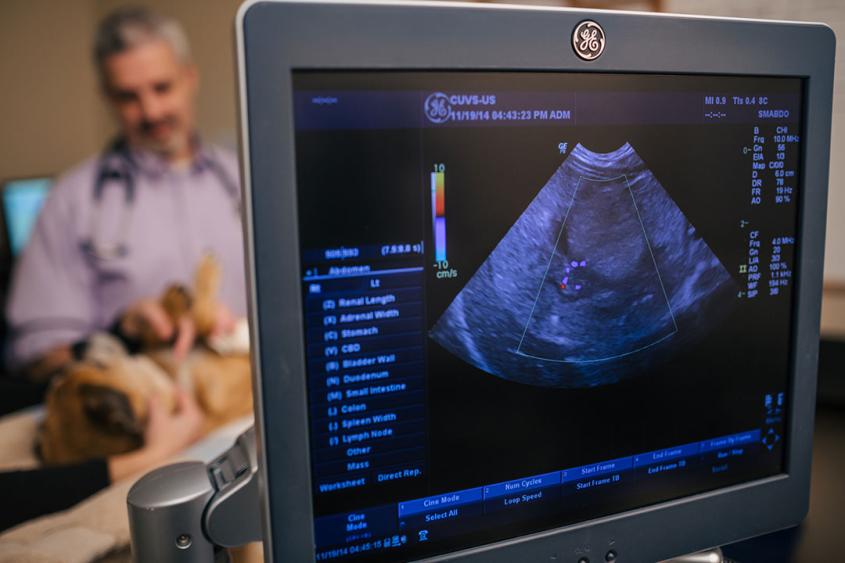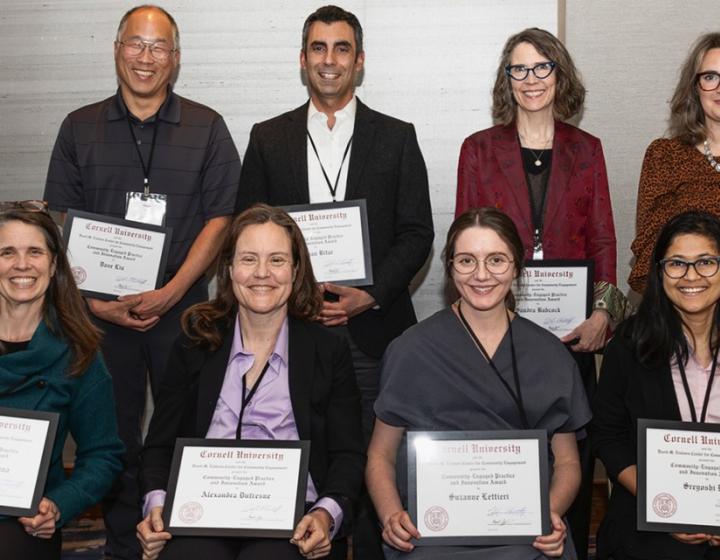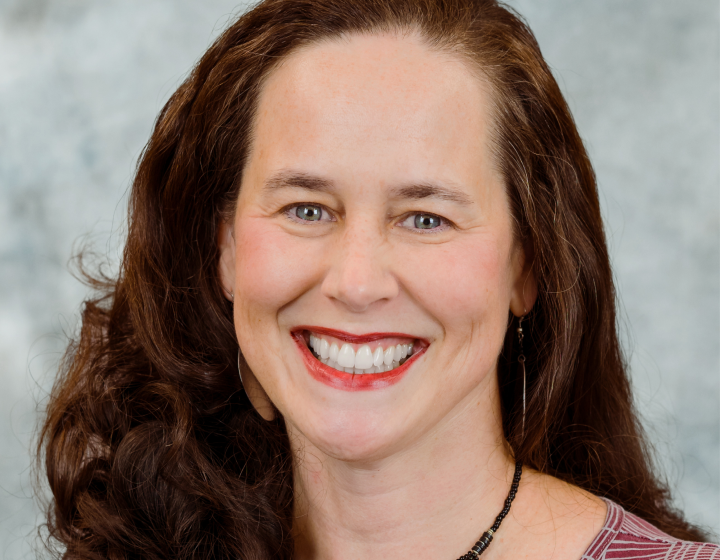Dedicated culture, advanced medicine: How CUVS keeps up the success
Ultrasound_Forman_0069-resize.jpg

Cornell University Veterinary Specialists in Stamford, Connecticut is among only approximately 20 Level I-certified hospitals of the Veterinary Emergency and Critical Care Society nationwide. All photos by Matt Branscombe of BSC Photo Studio.
It takes more than surgical skills to run an animal hospital, and no one has embraced this concept more than Dr. Susan Hackner.
As both the chief medical officer and chief operating officer of Cornell University Veterinary Specialists (CUVS) in Connecticut, Hackner has seen the hospital blossom from the very beginning.
“I’ve been with the project since its infancy,” she says. Over seven years ago, Dr. Michael Kotlikoff, then the dean of the College of Veterinary Medicine and currently provost of Cornell, approached Hackner with the immense project of bringing CUVS to life. As the first one hired, she knew from the start that for this project to succeed, it had to offer more than other animal hospitals in Connecticut; it had to provide a unique workplace culture and a dedication to customer service for a demanding clientele.
Her plan worked. The hospital has seen tremendous growth since opening in 2011, including a 25 percent increase in patient visits over the last year alone.
“A lot of things have changed in seven years,” says Hackner. “When we opened, we had fewer specialties. We had 30-something staff members and now we have about 100.”
CUVS is a subsidiary of Cornell University and a satellite hospital of the college, owned in full by the university and governed by a board of directors, of which Lorin D. Warnick D.V.M., Ph.D. ’94, the Austin O. Hooey Dean of Veterinary Medicine and Kotlikoff’s successor, is chair. It provides specialty and emergency medicine only — no general practice — and is open 24/7/365 for referrals and emergency cases.
As soon as she came on board, Hackner developed core values for the hospital which are in use to this day: patient-centered medicine, integrated care, collaborative decision-making, a culture of learning, professional partnerships, respect, personal responsibility and integrity. “The core values needed to tell people this is who we are, this is how we operate,” she says.
Anyone who joins the team at CUVS puts these values first. Even students who come to participate in the individualized two-week-long externship at the hospital embrace them from the start. “We think of them as our constitution,” says Hackner. “Unless you use the core values to make decisions and determine where you spend your resources, they’re just words.”
In addition to clearly established values, the operation has the space and facilities to keep them at the top of their game as well. Housed in a 20,000-square-foot building in Stamford, Connecticut, CUVS features state-of-the-art equipment and expertise, enabling a level of medical care that is available at few veterinary institutions. It also houses a tiered auditorium and overnight rooms for rotating residents and students from Cornell and elsewhere participating in the externship it offers. In 2014, CUVS received Level I certification from the Veterinary Emergency and Critical Care Society, distinguishing it as a facility at the highest level of veterinary trauma, emergency and critical care. The hospital is among only 20 or so such facilities nationwide.
Hackner and her team work hard to keep the hospital at the forefront of modern medicine. “Practicing the best medicine possible means nothing if all of the other parts of the hospital aren’t run well or your clients aren’t happy,” says rising third-year D.V.M. student Nicholas Walsh ’16, who completed a business and entrepreneurship-focused externship at CUVS. Walsh was able to dive deeper into the operations of the hospital during his two-week stay, observing how the staff, technicians and surgeons keep the place humming. In addition to the dedication of lifelong learning and the immersion of students in its day-to-day life, the hospital’s unique culture was and is a constant undercurrent.
“What we have is a hybrid between private practice and academia,” says Hackner. “It’s a different animal.”
CUVS implements a model of exceptional veterinary care that also supports the university’s mission of education and discovery, an ambassador for the mothership college a state away. The effectiveness of the College of Veterinary Medicine comes from the integration of both teaching and research, part of its land-grant foundation. With the success of CUVS, the college’s influence and impact extends beyond New York’s borders.

A unique culture
When staff criticalist Dr. Anusha Balakrishnan first joined the hospital team, the collaboration between the doctors and staff impressed her immediately. “I left a position at an academic institution to come to CUVS, and I feel that the environment at the hospital is just as conducive to constant learning and professional growth as any university setting,” she says.
This hybrid model first piqued her interest in joining the hospital. Bringing together the best of both the academic sphere and private practice is the hospital’s modus operandi, the way it fulfills the mission of the college. Hand-in-hand with this is the hospital’s culture. Hackner was determined to create a unique experience for the patient from the first interaction, through treatment, and to the moment they walk out the door. Same for the referring veterinarians, the staff, the surgeons and so on.
“We decided we were going to pay close attention to culture from the start,” Hackner says. “We decided to hire people who not only appreciated the culture, but understood their role in maintaining and growing it.”
Each employee would give a different answer if asked to define that culture — all will say it’s unique, but the reasons are as diverse as the patients they see. For Walsh, for example, it’s the interdepartmental collaboration. For Kara Mertzel, the hospital’s head of learning, it’s the focus on mentorship and continued learning. For alumna Amanda LaCroix, D.V.M. ’18, who completedthen externship there during her third year in the D.V.M. program, it was the immersion mentality — the welcoming atmosphere that allowed her to jump into the deep end immediately. For Balakrishnan, a “collegial and mutually respectful atmosphere where everyone strives to ensure the best possible patient care, and where every staff member is valued for what they bring to the team.”
The variety of answers is precisely the reason the culture is so healthy at CUVS. Their focus, their specialties and interests might be different, but as Hackner says, “we’re all headed in the same direction.”
In a nutshell, the culture at CUVS is both expansive and centered at the same time; there is a global view of what CUVS is, but it contains a 360-degree self-reflection that focuses on who they are, what they care about and why they get up in the morning.
Balakrishnan recalls last summer as an excellent example of this. They had a staffing crunch in the ER and an exploding caseload. “The caseload became overwhelmingly high,” she says, “and we had a situation where virtually every cage, every run in the hospital was full and there were critical patients everywhere.”
Everyone stepped up to the plate. “We had specialists picking up extra shifts on their days off, even covering overnights. We had other specialists helping with cases to minimize the ER workload, and we even had non-emergency and critical care specialists offer to come in and help with ER shifts! Technicians were staying well past their shifts to ensure patients were taken care of. It was an absolutely grueling month, but together we all made it through.”
She says it drove home the culture of cooperation, of ensuring exceptional patient care at all times, “no matter what it takes.”
“They’ve built a strong community and open workplace,” says Walsh. This community allows people to bring their best selves to the table. “Everyone has that sense of personal accountability,” says Balakrishnan. “Each one of us — whether doctor, staff or administration — sets an example with our words and actions every single day.”

Lifelong learners
Kara Mertzel is a rare breed. As the CUVS head of learning, she is one of the very few individuals at any animal hospital whose sole responsibility is advancing learning for employees. Usually, she says, learning is only a small percentage of a person’s job — part of the laundry list of assignments given to a human resources officer, for example.
“It’s important because my sole focus is to measure the effectiveness of learning within a field of individuals who are lifelong learners,” says Mertzel. “They have to keep refreshing their knowledge of advances in the medical field, and I’m thrilled to participate in that and bring a different experience.”
Since joining CUVS in October 2017, Mertzel has been working to standardize the basics common to every employee: what information do they need to know during their onboarding? What’s key to orienting them to work at the hospital? Mertzel’s plan has been to start there and then scaffold up to larger projects. “I’m asking what do we need to learn and how can we make it the most effective, most engaging experience so people can spend their time and intellect delivering the best medicine,” she says.
Now a few months in, Mertzel can sink her teeth into developing different, more complicated coursework: career pathing. “A big focus for CUVS is not only recruiting,” says Hackner, “but also career development, employee engagement and people developing their careers here.”
This harkens back to Hackner’s words on the hospital’s culture. Once they find staff there in Connecticut who share their core values, who are enthusiastic about their culture, they want to make lifelong relationships with these employees and provide opportunities for growth so that they feel enriched and challenged. This is particularly true for their nursing staff. While Connecticut doesn’t require licensure for technicians at an animal hospital, CUVS does —which means finding qualified candidates can be difficult and they must often seek them out across state lines. Some technicians drive two or three hours both ways to work, so Hackner and Mertzel’s efforts are geared toward making that work compelling enough to continue such a commute. This includes clinical as well as management training.
“Our nursing staff is the largest population of our employees,” says Mertzel. “They have the most opportunities to affect the quality of our patient care, so it’s important that we develop not just the technical side of our team, but also other sides to the business.” Work on communication, leadership skills, problem solving, emotional intelligence and decision-making are key to this training. The 360-degree culture present at the hospital extends to every employee’s growth.
Balakrishnan, for example, finds that efforts to grow professionally and collaborate are present between colleagues in addition to what they might plan with Mertzel. “I love the hallway discussions we often have on the latest literature pertaining to cases,” she says, “or brainstorming to come up with novel, cutting-edge diagnostic and treatment options for patients.”
Since the hospital has grown so much, creating individualized training and a career path for around 100 employees can appear taxing. To Mertzel, however, working on customized learning initiatives is actually quite easy since everyone has the same objective — to deliver the best medicine. “Having that unity of vision makes it much easier to determine what people need,” she says.

Teaching opportunities
Externships at the hospital are just as individualized. One student stays for two weeks in the CUVS housing facilities, which are free to Cornell students. In the last year, 27 students rotated through for a total of 56 weeks, and included both Cornell students and individuals from around the world. In addition to Tufts and the University of Pennsylvania, veterinary schools in Ohio, Iowa, New Jersey, Tennessee and Illinois have all sent students for training at CUVS. International participants have come from places like the Royal Veterinary College in London, the Universities of Queensland and Sydney as well as the Universidad Nacional Autónoma de México.
LaCroix completed her externship just last year and was thrilled by the easy transition into their practice. “So many externships are daunting due to expense of travel and housing,” she says, recalling one night when an emergency case came in and, since she was sleeping in the same building, she was able to scrub in and observe. “All I had to do was walk down the stairs,” she says.
Externs at CUVS learn by being immersed in the service. While it’s not actually a teaching hospital — which means their learning is done by observation — students are like shadows to the specialist they’re with.
“They get to be part of rounds, see the thought process of a particular case, be there when the specialist is speaking to the client and so on,” says Hackner.
This was the perfect transition for LaCroix, who did the externship before she started her clinical year. “It was a wonderful way to prepare for it,” she says, “and everyone was so receptive to having students.”
Walsh felt similarly, and got to experience firsthand how individualized the externship could be. He was the first student to come with a business and entrepreneurship focus — in addition to rounds and surgery and client communication, Walsh observed the inner workings of the hospital from top to bottom. “This externship allowed me to experience and learn about what goes into managing a specialty hospital,” he says. Walsh intends to open his own emergency and referral practice in the future, so the business experience was vital to his time there. “We covered all aspects of management from finance, human resources, inventory, client services and IT to decision-making and contract negotiation.”
While medical and surgical experience is integral to being a successful veterinarian, because Walsh anticipates opening his own practice, he knew he needed to diversify his training to ensure he was prepared when the time came to face a world beyond the clinical floor. “I was so impressed with how efficient the hospital is,” says Walsh, “and also by how welcoming and willing to teach people are.”
“We try to help students understand efficiency,” says Hackner. “You can be efficient without compromising quality.”
Members of CUVS recognize that extending individualized training to students like LaCroix and Walsh is part of their mandate, and they’re enthusiastic in carrying it out. “The doctors were amazing at giving rounds on subjects relevant to the cases we saw,” says LaCroix. “There were many things I learned I’ll be able to continue to apply in my daily practice.”

Focused on communication
Externs get to see how everyone at CUVS collaborates with each other, what things work and how things feel when the culture is really strong, says Hackner. “Most importantly,” she says, “they see how we communicate.”
Hackner stresses that she hires communicators, no matter their job title. Each person must be an expert in their field as well as how they express that field to others.
“These are experienced people who are communicating with clients about difficult prognoses, about financial aspects, so the students get to see many different forms of communication from people who are very good at it,” she says.
That said, there’s not just one way to approach these interactions. Walsh found that each clinician he worked with had their own unique approach to communicating with clients, “but all were flawless in their execution of it.” He said he soaked all of this in like a sponge. “It was important to appreciate all that they do at CUVS and learn the skills I should take with me when communicating with my future clients.”
Masterful communication is key given the high-stress environment and clientele whom CUVS treats. In the last year, they had approximately 16,000 patient visits, 77 percent from Connecticut and 21 percent from New York. Since they are located over 200 miles away from the Cornell University Hospital for Animals in Ithaca, it’s a given that their clientele are completely different — different values, unique concerns. The people whom CUVS serves tend to understand specialty medical options, says Hackner. “We have a very loyal following of clients. They are highly engaged and love their animals,” she says. “The definition of providing good service in our world is different than providing good service elsewhere precisely because of that clientele.”
Balakrishnan works to ensure that her interactions with clients and her patients are as seamless and calm as possible, given the controlled chaos of an advanced emergency animal hospital. “I strive to make sure I make these experiences less stressful for clients and work closely with them to figure out the best possible options for their pets,” she says. “Every clinician at CUVS practices exceptionally high-quality care. To be able to practice this type of cutting-edge medicine with colleagues you love working with is such a pleasure.”

Cultivating the culture
For Mertzel, who’s approaching her first-year anniversary at the hospital, she embraces doing her part to cultivate the hospital’s unique culture, recognizing that CUVS can only be as effective as its staff. “Coming from outside of veterinary medicine, it has been exciting to work with individuals who are so invested in their field,” she says. “They’re so inspired and passionate about what they do that it’s difficult not to feel the same.”
CUVS is more than the sum of its parts. Its work culture, learning initiatives, professional development, modern practices and general hybrid nature facilitate the challenge of bringing Cornell expertise to Connecticut. “Because we respect what others bring to the table,” says Mertzel, “we openly ask for input and insight from other experts, which elevates the standard of care we are able to deliver and reinforces a culture of learning.”
“We’re that mix of academic and practice, medical and service,” says Hackner, “and we work — individually and collectively — to deliver the best medicine, which is our ultimate goal.”
By Melanie Greaver Cordova




